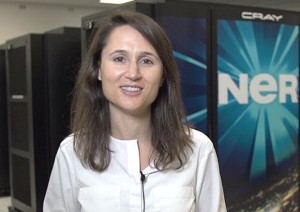
Katie Antypas,
Services Department Head, National Energy Research Scientific Computing Center, Lawrence Berkeley National Laboratory
In this video from the 2016 MSST Conference, Katie Antypas from NERSC presents: Superfacility – How new workflows in the DOE Office of Science are changing storage system requirements. The Superfacility Vision describes a network of connected facilities, software and expertise to enable new modes of discovery.
“As the department head of Scientific Computing and Data Services at the National Energy Research Scientific Computing (NERSC) Center, Katie has oversight of the Data Science Engagement, Data and Analytics Services, Storage Systems, and Infrastructure Services groups. Katie is also the Project Lead for the NERSC-8 system procurement, a project to deploy NERSC’s next generation supercomputer in mid-2016. The system, named Cori, (after Nobel Laureate Gerty Cori) will be a Cray XC system featuring 9300 Intel Knights Landing processors. The Knights Landing processors will have over 60 cores with 4 hardware threads each and a 512 bit vector unit width. It will be crucial that users can exploit both thread and SIMD vectorization to achieve high performance on Cori. Additionally the Knights Landing architecture features high bandwidth on-package memory up to 5 times faster than DRAM memory. The system also features the Cray Aries interconnect, 28 PB for a Lustre based file system, and a ‘burst buffer’ a layer of NVRAM that sits between the compute node memory and file system that will serve to accelerate I/O.”




